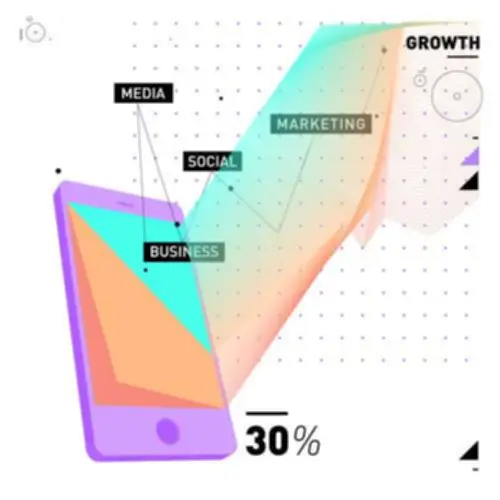The hidden state captures the patterns or the context of a sequence right into a summary vector. Recurrent neural networks are used to model sequential knowledge with the time step index t, and incorporate the technique of hire rnn developers context vectorizing. In LSTM, the computation time is massive as there are plenty of parameters involved during back-propagation.

Recurrent Neural Networks Vs Feedforward Neural Networks
In a CNN, the collection of filters effectively builds a network that understands increasingly more of the image with each passing layer. The filters in the preliminary layers detect low-level features, corresponding to edges. In deeper layers, the filters start to acknowledge more complex patterns, similar to shapes and textures. Ultimately, this ends in a model able to recognizing whole objects, regardless of their location or orientation in the image.

Distinction Between Rnn And Easy Neural Community
The enter layer receives the enter, passes it through the hidden layer where activations are utilized, and then returns the output. Context vectoring acts as “memory” which captures information about what has been calculated up to now, and permits RNNs to remember previous info, where they’re in a position to preserve info of long and variable sequences. Because of that, RNNs can take one or a number of input vectors and produce one or multiple output vectors. Context vectorizing is an strategy where the enter sequence is summarized to a vector such that that vector is then used to predict what the subsequent word might be.
Artificial Information To Enhance Deep Learning Fashions
In the next instance, we’ll use sequences of english words (sentences) for modeling, because they inherit the same properties as what we discussed earlier. We choose sparse_categorical_crossentropy as the loss function for the model. The goal for the mannequin is aninteger vector, each of the integer is within the range of 0 to 9. If you may have very long sequences though, it’s useful to break them into shortersequences, and to feed these shorter sequences sequentially right into a RNN layer withoutresetting the layer’s state. That way, the layer can retain information about theentirety of the sequence, although it is solely seeing one sub-sequence at a time. Wrapping a cell inside akeras.layers.RNN layer offers you a layer capable of processing batches ofsequences, e.g.

- Another difference is that the LSTM computes the new reminiscence content with out controlling the quantity of earlier state info flowing.
- The course of begins by sliding a filter designed to detect certain options over the enter image, generally known as a convolution operation.
- They also proposed novel multi-modal RNN to generate a caption that is semantically aligned with the input image.
- However, a number of in style RNN architectures have been introduced within the subject, starting from SimpleRNN and LSTM to deep RNN, and applied in several experimental settings.
- Additional stored states and the storage beneath direct management by the network could be added to each infinite-impulse and finite-impulse networks.
The mounted back-connections save a copy of the earlier values of the hidden units within the context models (since they propagate over the connections before the learning rule is applied). Thus the community can keep a kind of state, permitting it to carry out duties corresponding to sequence-prediction that are past the power of a normal multilayer perceptron. Fully recurrent neural networks (FRNN) connect the outputs of all neurons to the inputs of all neurons. This is the most basic neural community topology, as a result of all different topologies can be represented by setting some connection weights to zero to simulate the shortage of connections between those neurons.
I hypothesize that recurrent neural networks (RNNs), because of their ability to mannequin temporal dependencies, will outperform traditional machine learning fashions in predicting buyer behavior. Specifically, RNN-based models like LSTM and GRU are anticipated to indicate larger accuracy, precision, and general predictive efficiency when utilized to customer purchase knowledge. As a recent technical innovation, RNNs have been combined with convolutional neural networks (CNNs), thus combining the strengths of two architectures, to process textual data for classification duties.
Recurrent Neural Networks (RNNs) are a powerful and versatile tool with a broad range of purposes. They are commonly used in language modeling and text technology, as nicely as voice recognition methods. One of the key advantages of RNNs is their capability to process sequential data and seize long-range dependencies. When paired with Convolutional Neural Networks (CNNs), they will successfully create labels for untagged images, demonstrating a powerful synergy between the two forms of neural networks. Unlike standard neural networks that excel at tasks like image recognition, RNNs boast a singular superpower – memory! This inside memory permits them to analyze sequential knowledge, the place the order of information is essential.
There might be extra enthusiastic clients, who write a short essay about their expertise but, from a knowledge perspective, the result is a vector of comparatively low dimensionality. The actual computation of the gradient is what known as back-propagation [1]. But is often confused with the precise studying half, accomplished by algorithms like Stochastic Gradient Descent. After making use of Softmax, the sum of all values of vector z at all times adds as a lot as one.
The course of begins by sliding a filter designed to detect certain options over the enter picture, generally recognized as a convolution operation. The results of this process is a characteristic map that highlights the presence of the detected image features. AUC is especially useful for imbalanced datasets, the place accuracy won’t mirror the model’s true efficiency. The optimizer updates the weights W, U, and biases b based on the training fee and the calculated gradients.
The feed-forward network works well with fixed-size input, and doesn’t take structure under consideration properly. Here is an easy example of a Sequential mannequin that processes sequences of integers,embeds every integer right into a 64-dimensional vector, then processes the sequence ofvectors using a LSTM layer. VAE is a generative mannequin that takes into account latent variables, however is not inherently sequential in nature. With the historical dependencies in latent space, it may be remodeled into a sequential model where generative output is bearing in mind historical past of latent variables, hence producing a abstract following latent buildings. Such gradient computation is an costly operation as the runtime cannot be reduced by parallelism as a outcome of the forward propagation is sequential in nature.
RNNs are typically helpful in working with sequence prediction issues. Sequence prediction issues come in many varieties and are greatest described by the forms of inputs and outputs it supports. Using the enter sequences (X_one_hot) and corresponding labels (y_one_hot) for 100 epochs, the model is trained using the mannequin.fit line, which optimises the mannequin parameters to minimise the explicit crossentropy loss. In RNN the neural community is in an ordered trend and since within the ordered network every variable is computed one at a time in a specified order like first h1 then h2 then h3 so on. Hence we are going to apply backpropagation throughout all these hidden time states sequentially.
In 1993, Schmidhuber et al. [3] demonstrated credit score task throughout the equivalent of 1,200 layers in an unfolded RNN and revolutionized sequential modeling. In 1997, one of the most well-liked RNN architectures, the lengthy short-term memory (LSTM) network which may course of lengthy sequences, was proposed. They excel in easy tasks with short-term dependencies, similar to predicting the next word in a sentence (for quick, simple sentences) or the subsequent worth in a easy time sequence. Another distinguishing attribute of recurrent networks is that they share parameters throughout every layer of the network. While feedforward networks have totally different weights throughout every node, recurrent neural networks share the same weight parameter inside each layer of the community. That stated, these weights are nonetheless adjusted via the processes of backpropagation and gradient descent to facilitate reinforcement learning.
The search algorithm then iteratively tries out totally different architectures and analyzes the outcomes, aiming to search out the optimal mixture. To illustrate, imagine that you wish to translate the sentence “What date is it?” In an RNN, the algorithm feeds every word separately into the neural network. By the time the mannequin arrives on the word it, its output is already influenced by the word What. Finally, the ensuing info is fed into the CNN’s absolutely connected layer.
Transform Your Business With AI Software Development Solutions https://www.globalcloudteam.com/
Leave a Reply